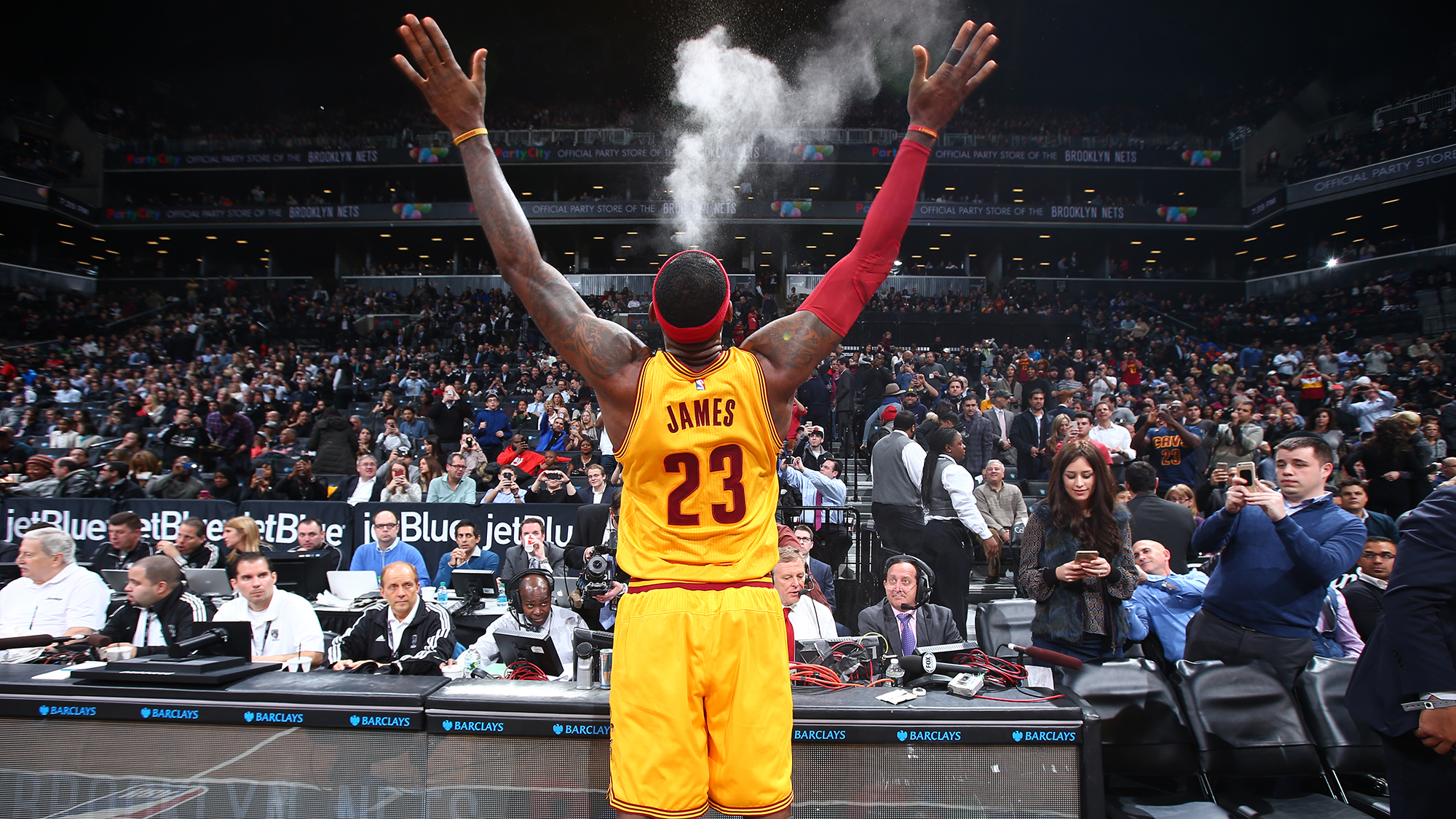
From LeBron James’ iconic chalk toss to Wade Boggs’ pre-game routine of grounders and chicken, athletes have been employing superstitious tactics in an effort to succeed since the dawn of time. But the real question remains:
Do they work?
Pull up any LeBron James highlight reel on YouTube or betfred from his days with the Cleveland Cavaliers and you’re bound to see an iconic moment that became a signature of his pregame procedure: While standing at the official’s bench with his back to the court, fans drooling in anticipation over the event they’re about to behold, James covers both hands in chalk dust and looks briefly to the crowd, drawing them in with a straight face and warrior-like demeanor.
Quickly he puts his hands together and launches chalk dust to the sky, hands held high in an angelic pose as fans jump from their seats in celebration. James steps back from the cloud of dust and claps his hands three times, putting each to his mouth and blowing through them like one would to warm them on a cold winter’s day.
This is a pose that defined James early in his career. After all, many of us—Cavs fans or not—still recall the Nike banner ad in Cleveland that commemorated Lebron’s unforgettable display (both the original banner, and the one erected for his return from Miami). And ritual or not, this act quickly became a staple of his pregame routine.
While James’ public ceremony became an iconic scene before each game that wooed even fans from opposing teams, professional athletes have been employing tactics just as strange behind the scenes for decades, if not centuries.
Take for instance Wade Boggs, an icon known for his stellar 18-year hall of fame baseball career. Boggs had several pregame habits that he believed led to personal success on the field. These included eating chicken before each game, fielding exactly 117 ground balls, taking batting practice at 5:17 and running sprints at 7:17 on game day, and drawing the word Chai (Hebrew for “Life”) in the dirt before coming to bat.
While some may shake their heads in disbelief at the idea of such habits, who’s to say whether or not they actually work? After all, Boggs went down as one of the best contact-hitters in baseball of all time, ending his career with a .328 batting average and .415 OBP.
James meanwhile is often compared to greats the likes of Michael Jordan, Bill Russell, and Wilt Chamberlain. Many have gone on to say he is actually far better.
Athletes around the world—from baseball players to professional bowlers to alpine skiers—have employed similar tactics that they attribute to personal success in competition. While fans can only look on in puzzled expression, or cheer as chalk dust fills their lungs, one question remains: Do these habits work?
Ask the athletes and you’ll get a biased response. After all, it seems pretty fair to suggest that a larger percentage of athletes are superstitious when compared to the general population.
But what does science suggest?
Well for starters, science has different definitions for a ritual and a routine. A ritual is defined as an action that lacks a direct purpose. Take retired Chicago Bears linebacker Brian Urlacher, for instance, who supposedly consumed exactly two girl scout cookies before each game. No more, no less.
A routine, however, is considered an action that has performance benefits. So while Boggs’ consumption of chicken and 117 fielders seems odd, these habits did in fact provide him with a repetitive diet and the ability to properly warm up the body, respectively of course.
In the end, researchers seem to agree that both have benefits in competition. George Gmelch, anthropologist at the University of San Francisco and former minor-league baseball player, meticulously studied the habits of pitchers and batters in baseball—positions that are often considered the most unpredictable.
When compared to positions that involved accurately catching and throwing a ball—relatively simple tasks compared to that of pitchers and batters—Gmelch found that players were using rituals to gain more personal control in a situation that felt uncertain.
Kissing a necklace, tapping the bat on the ground, tugging at their jersey, or touching the brim of their hat a specified number of times were only a few of the various rituals employed by baseball players. Though they did nothing to directly enhance the player’s performance, they did create an environment that left them feeling like they had more command.
While we look at James’ ritual as nothing more than an elaborate display for fans, or Urlacher’s girl scout cookie consumption as an excuse to snack, odds are these tactics help much more than we know. They provide the athlete with a sense of focus, mental clarity, and immediately place them into a state of ‘flow’.
So the next time you feel inclined to denounce the seemingly odd player who’s about to triple tie their laces and finish off the ritual by eating a Twizzler or two, hold your tongue. Instead, get in on the action and join them.
